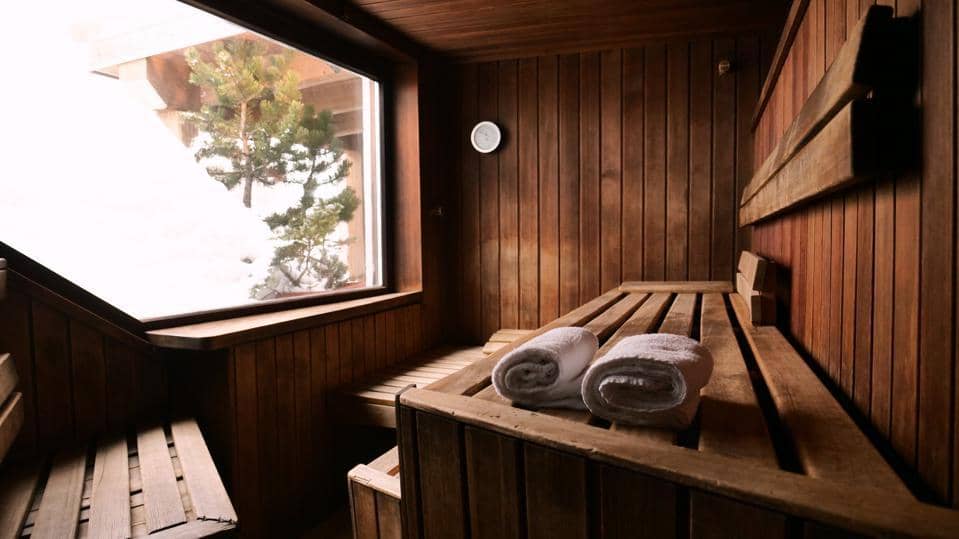
A home sauna is an excellent method to enjoy the benefits of heat treatment in the privacy of your own home.
This post will list some ideal home saunas—infrared, portable, wood-fired, and more—coming in at varying price points. Continue reading to identify your perfect home sauna match.
How to Buy Home Saunas: What to Look for
1. Safety:
It is critical to select a home sauna composed of non-toxic materials, has safety glass, and has simple and intuitive controls to relax without fear of overheating or becoming trapped. When selecting a home sauna, select the appropriate model for its desired location. Also, consult an electrician to ensure that you install it correctly to keep you, your friends, and your family safe.
2. Extra Features:
While the capacity to sweat off toxins is the most crucial aspect of a home sauna, you may want to choose a model with additional functions to enhance the experience. These features include reading lights, built-in speakers to listen to music or podcasts, or colorful and customizable mood lighting.
3. Infrared or Steam:
When purchasing a home sauna, you must choose between a regular steam model and an infrared one. While both solutions create the same steamy outcome, they do it differently. Traditional steam saunas produce a sweatbox condition by heating the air inside the box.
However, infrared saunas heat your body internally without affecting the temperature of the air around you. If you want the benefits of a sauna but can’t tolerate the heat, consider an infrared sauna.
Below are the Types of Saunas Available in the Market:
1. Wood-Burning Sauna:
The history and culture of the wood-burning sauna, the oldest type of sauna, go back thousands of years. The two most distinctive qualities are that a wood-burning sauna is heated by fire and has a shallow humidity level.
Prepare and stoke the fire in a wood stove to maintain a steady temperature. This, in turn, heats the stones that regulate the temperature of the space—though temperature precision is challenging to attain.
A spoon of water can be placed on top of the rocks in a wood-burning sauna to improve humidity. Significantly, the maintenance of the coals and a steady supply of wood are necessary for a wood-burning sauna.
Advantages:
Can often accommodate larger groups of people.
Not dependent on electricity.
Relatively low-cost option.
Disadvantages:
Takes time to heat up.
Require more upkeep.
Not suitable for indoor installation.
Steam Sauna:
In contrast to low-humidity saunas, which are frequently made of wood, steam saunas or steam rooms have a high air humidity level—nearly 100%. Therefore, building steam saunas out of tile and mold-resistant materials is standard practice. You can prevent mold growth with competent installation, even with suitable materials.
.
Compared to ordinary saunas, steam saunas operate at lower temperatures on average. However, you should still feel the heat because of the high humidity.
Steam saunas can be your best bet if you want a sauna to help with respiratory problems. Most steam sauna models on the market boil water and generate steam using electricity.
Advantages:
Better suited to individuals who favor a “wet heat.”
Doesn’t require as high of a temperature.
It can help with respiratory problems.
Disadvantages:
Dry saunas provide greater comfort for longer sessions.
Professional installation recommended.
Prone to mold problems.
3. Infrared Sauna:
Infrared saunas are firmly on the “modern vs. traditional” spectrum, with traditional Finnish saunas at one end. Although users’ bodies are heated in both saunas, infrared saunas operate fundamentally differently. An infrared sauna’s absolute room temperature is shallow, and infrared light wavelengths heat the users’ bodies directly.
If all you want to do is unwind in a sauna, this ought to be sufficient. You should also consider the type of infrared bulbs used in the sauna; some models employ far infrared, some near-infrared, and still others both.
Advantages:
Heats up quickly.
Maybe a more comfortable user experience.
Inexpensive.
Disadvantages:
Repairs may be more expensive.
High-end and large infrared saunas are expensive.
Not suitable for indoor installation.
Electric Sauna:
An electric sauna should provide a similar in-sauna experience to a wood-burning sauna, but without the smell of burning wood. Burners and stones continue to be the primary heating elements in electric saunas. Because of this, there is very little humidity, but you can pour water over the stones just like in a sauna that uses wood.
Both indoor and outdoor locations are suitable for installing electric saunas, though outdoor models will still need a strong electrical connection, which could increase the installation cost. They come in different sizes, though an electric sauna will probably not be as big as a wood-burning one.
Advantages:
Options across multiple price points.
More temperature control and faster heating time.
Can be installed indoors or outdoors.
Disadvantages:
Purists may prefer wood-burning effects.
Dependent on electricity.
Not ideal for large groups.
Bottom line:
Choosing the best indoor sauna can be a straightforward process. First, determine the best sauna size for your needs. You and your guests can relax and enjoy hours of therapeutic delight.
Next, think about the health benefits you want to enjoy while resting. This will also assist you in selecting the appropriate sauna type. With the appropriate wiring, you may enjoy your beloved possession’s limitless benefits from wherever in the house.
